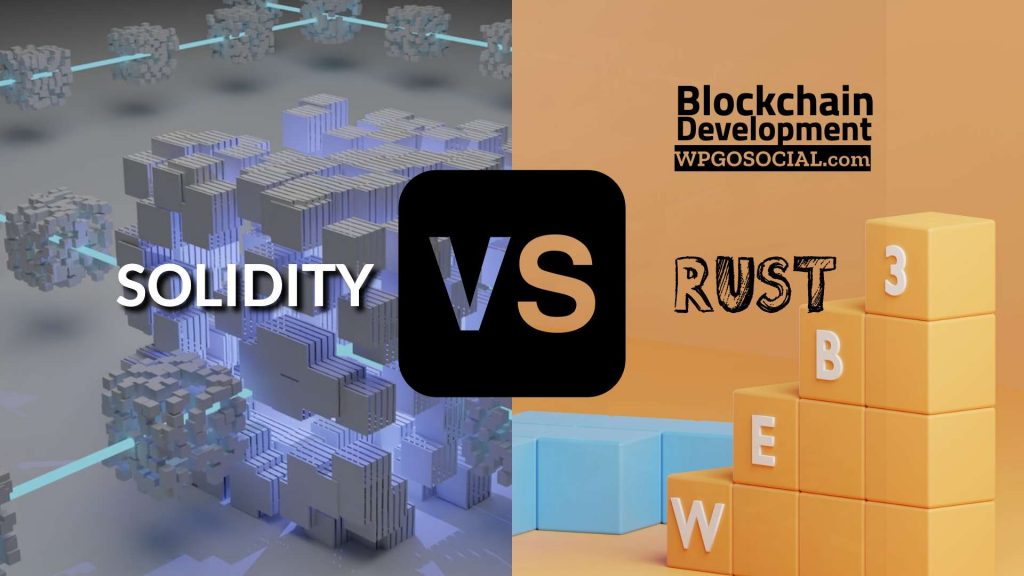Introduction
Blockchain development is growing rapidly, making it necessary to carefully select the right developer tools. One important consideration is choosing between Solidity and Rust languages. Both have their pros and cons, but knowing the key differences between these languages can help developers make an informed decision.
What is Solidity?
Solidity is a high-level programming language explicitly designed for writing smart contracts on Ethereum-based blockchains. Developed by Gavin Wood in 2014, Solidity has since become one of the most popular languages for building decentralized applications (dApps).
Solidity is a programming language used for writing smart contracts that run on Ethereum blockchain. It is relatively easy to learn and understand as it follows similar syntax and structure to JavaScript, making it popular among developers with JavaScript experience. Solidity has a strong community support and a large number of libraries available which simplify its usage.
What is rust?
Rust, on the other hand, is a newer language designed primarily for systems programming. It was created by Mozilla developers Graydon Hoare and Dave Herman to address some common issues associated with C++’s memory management system.
Rust has been gaining popularity in the blockchain world due to its high performance, security features, and memory safety features. Developers can use Rust for any blockchain platform since it allows them to write low-level code, ensuring faster transaction processing times.
Benefits
While both Solidity and Rust have their benefits, they are fundamentally different from each other. Solidity is primarily used for building smart contracts on Ethereum blockchain while Rust can be used for various blockchain platforms like Substrate or Polkadot that require lower-level code.
Moreover, Solidity’s simplicity comes at the cost of limited features compared to more complex languages like Rust which offer greater flexibility in development. Rust excels in performance while providing numerous safety guarantees such as memory safety which makes it particularly suitable for developing secure decentralized applications.
When it comes to performance, Rust outperforms Solidity in terms of execution time and gas usage. This can be attributed to the fact that Rust is a compiled language whereas Solidity is an interpreted language. Moreover, Rust has better memory management and concurrency features which help developers write efficient code.
However, Solidity still remains the popular choice for developing smart contracts on Ethereum-based blockchains because of its large user base and high-level abstractions that simplify contract creation.
Difference
Type system
Solidity has a simpler type system compared to Rust’s more complex system that uses multiple types of ownerships to ensure thread-safety. While Solidity’s simple type system makes it easier to learn for beginners, Rust’s complex system adds an additional layer of security as it offers memory safety without garbage collection.
Smart contract execution environment
Smart contracts coded using Solidity run on the Ethereum Virtual Machine (EVM), which acts as a sandboxed environment preventing attack interference from external sources. In contrast, Rust allows smart contract execution outside of its runtime environment resulting in flexibility; however this also means that there may be potential external risks involved.
Performance
Rust aims at being fast and efficient when dealing with system-level tasks such as data parsing or networking protocols. It achieves this by minimizing runtime overhead, statically verifying program correctness and using LLVM backend optimizations while taking advantage of modern CPU instruction sets. Solidity code, however, tends not to be optimized to the same level due to constraints imposed by Ethereum’s Virtual Machine (EVM) and gas limits.
When it comes to performance, Rust has an advantage over Solidity due to its ability to compile directly into machine code, which allows it to run faster compared to Solidity’s bytecode interpretation process. In addition, Rust’s lightweight nature allows it to run on lower-end hardware devices.
Community Support
Solidity is an established language with a large community that contributes to its ongoing development. The Solidity standard library includes many useful tools for building decentralized applications, such as libraries and templates. Rust, on the other hand, has been growing rapidly in popularity, especially within the blockchain developer community, and it benefits from a large open-source ecosystem
Recursion
Recursive function calls are allowed in Solidity to design complex code architectures. However, recursion isn’t the most efficient algorithm for computers to compute.
On the other hand, Rust bases its recursive architecture on traits which allow for defining similar usage patterns without turning to complete recursion which could lead to non-linear memory consumption within this embedded system.
Memory allocation
Rust has an advantage over Solidity. In Solidity, memory allocation can be expensive and inefficient. This is because Solidity dynamically allocates memory for variables at runtime. This can result in unexpected and unwanted gas costs.
Contrarily, Rust uses a static memory allocation system that allows for more efficient and predictable memory usage. With Rust, developers have greater control over how and when memory is allocated or deallocated, which leads to better performance and cost savings.
Another area where Rust excels in comparison to Solidity is in its support for parallelism. Rust’s ownership model ensures that data can be safely shared among threads, allowing for concurrent execution of code without introducing potential race conditions or other concurrency-related bugs.
Overall, while both Solidity and Rust have their own unique strengths and weaknesses, Rust may prove to be a more versatile language than Solidity when it comes to building decentralized applications on blockchain platforms.
Examples: Memory allocation
In Rust, you can allocate memory on the stack or on the heap. The stack is faster, but has limited space, while the heap is slower but can hold more data.
Here’s an example of allocating memory on the stack in Rust:
fn main() {
let x = 10;
// `x` is allocated on the stack
}
And here’s an example of allocating memory on the heap in Rust:
fn main() {
let mut vec = Vec::new();
vec.push(1);
vec.push(2);
vec.push(3);
// `vec` is allocated on the heap
}
In contrast, Solidity uses a single storage model for everything. Everything, including variables and arrays, is stored in a single, flat namespace called storage. Here’s an example of how storage might be used in Solidity:
pragma solidity ^0.8.0;
contract MyContract {
uint256 myNumber;
function setMyNumber(uint256 _myNumber) public {
myNumber = _myNumber;
}
function getMyNumber() public view returns (uint256) {
return myNumber;
}
}
In this example, `myNumber` is declared as a `uint256` variable stored in storage. When we call `setMyNumber`, we are writing to that storage location, and when we call `getMyNumber`, we are reading from that storage location.
I hope this helps illustrate some of the differences between Rust and Solidity when it comes to memory allocation!
When you allocate memory on the stack, the size of the memory must be known at compile-time. This means that Rust will not allow your program to allocate more memory than it was designed to handle.
Here is a sample code illustrating how to allocate memory on the stack in Rust:
rust
fn main() {
let x = 42;
let y = 10;
let z = x + y;
println!(“The sum of {} and {} is {}”, x, y, z);
}
In this example, we declare three variables `x`, `y`, and `z` and then compute their sum. All the variable allocations occur on the stack.
On the other hand, when you allocate memory on the heap in Rust, you don’t know how much memory will be needed at compile-time. To handle this dynamic allocation of memory, Rust provides a mechanism called “ownership”. Ownership allows Rust to automatically deallocate dynamically allocated memory when it is no longer needed.
Here is an example of allocating dynamic memory on the heap in Rust:
rust
fn main() {
let v = vec![1, 2, 3];
for i in &v {
println!(“{}”, i);
}
}
In this example, we create a vector using `vec![]` macro, which allocates space for three integers `[1,2,3]`. The vector data lives on heap and its pointer (known as “reference” in rust) is stored on stack.
Now let’s move to Solidity.
Solidity also has its own way of allocating memory. Solidity employs a data structure called “storage” which holds all permanent state variables. Storage layout reflects object-oriented principles of inheritance and accessibility modifiers such as internal or private.
Here is an example of Solidity code that illustrates memory allocation:
solidity
contract Example {
uint x;
function assign(uint _x) public {
x = _x;
}
}
In this example, we define a contract named `Example` that contains a state variable `x`, which can hold an unsigned integer. The `assign` function assigns the value of the input parameter `_x` to the contract’s storage variable `x`.
Conclusion
In conclusion, both Solidity and Rust have their strengths and weaknesses when it comes to building decentralized applications. Although Solidity has been widely adopted by many projects in the space, Rust’s growing popularity suggests that it may become a formidable opponent in the future. It’s important for developers and project teams to consider their specific needs and requirements when deciding which language best suits their project goals.
Let’s stay connected **
My website: WPGOSOCIAL.com is a web development and marketing company. We specialize in helping Small Businesses develop credibility and brand awareness.
Quora: Question and answer with Romeo Clennon founder of WPGOSOCIAL.com; about web design, web hosting, marketing, SEO and more.
Pinterest: For marketing infographics, funny videos and more.
Stop by just to say hi, or come check out the great content on our other platforms.




